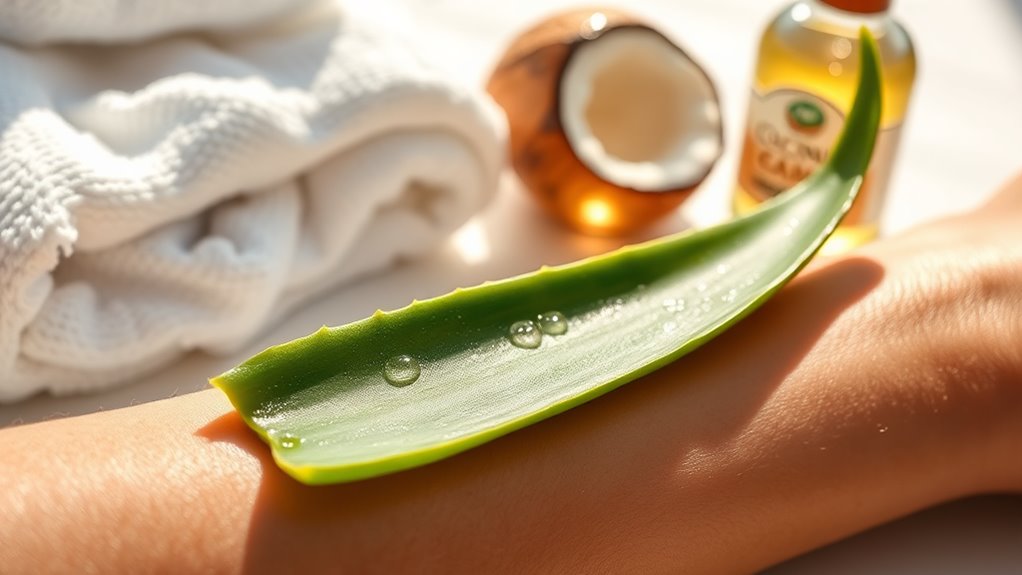Aloe Vera Saved My Skin After Sunburn-Here’s How I Used It
If you’ve ever suffered from sunburn, aloe vera could be your saving grace. To soothe your skin, clean the affected area with cool water, then apply a generous layer of aloe vera gel. Its anti-inflammatory properties will reduce redness and swelling while hydrating your skin. Reapply throughout the day as needed to maintain relief and promote healing. You’ll notice improvements like reduced discomfort and skin texture changes. Discover more tips on sun protection to keep your skin healthy.
Understanding the Effects of Sunburn
Sunburn is a painful reminder of overexposure to ultraviolet (UV) rays from the sun.
When your skin suffers from sunburn, it can lead to redness, peeling, and discomfort.
To alleviate the symptoms, many people turn to the sunburn aloe trick.
This remedy can help hydrate and soothe the skin, promoting faster healing and providing relief from the burning sensation. Additionally, aloe vera contains gel-forming polysaccharides that create a protective barrier, delivering immediate relief to sunburned skin.
Why Aloe Vera Is a Natural Remedy
When dealing with the discomfort of sunburn, natural remedies can offer effective relief.
Aloe vera stands out due to its anti-inflammatory properties, which help reduce redness and swelling.
Its high water content hydrates the skin and promotes healing.
Rich in vitamins and antioxidants, aloe vera nourishes damaged skin, making it a trusted choice for soothing sunburn and enhancing recovery. Additionally, its lightweight texture allows for easy application, making it suitable for daily use even after the initial sunburn has healed.
How I Applied Aloe Vera to My Sunburn
After realizing I’d a severe sunburn, I reached for my trusty aloe vera gel, knowing it would help soothe the pain.
Here’s how I applied it:
-
Clean the affected area with cool water and a gentle cleanser.
-
Take a generous amount of aloe vera gel and spread it evenly over the sunburned skin.
-
Allow it to absorb fully, reapplying as needed throughout the day. Aloe vera’s healing properties effectively reduce inflammation and promote skin regeneration.
Observing the Healing Process
Once you’ve applied the aloe vera gel, you’ll want to keep an eye on how your skin responds.
Look for signs of soothing, such as reduced redness and a decrease in discomfort.
Pay attention to any peeling or inflammation.
Regularly check for changes in texture, as healing skin may feel rough initially.
Documenting these observations can help you understand aloe vera’s effectiveness. Additionally, it’s important to remember that aloe vera has anti-inflammatory effects, which can significantly aid in reducing redness and swelling.
Tips for Future Sun Protection
To protect your skin from the harmful effects of sun exposure in the future, consider implementing a multi-faceted approach.
Here are three key tips:
-
Apply Broad-Spectrum Sunscreen: Use SPF 30 or higher, and reapply every two hours.
-
Wear Protective Clothing: Choose lightweight, long sleeves and a wide-brimmed hat.
-
Seek Shade: Avoid direct sunlight between 10 AM and 4 PM.
Additionally, maintaining balanced skin pH can help regulate sebum production, supporting your skin’s overall health.
Stay proactive in safeguarding your skin!
